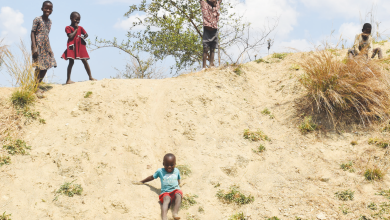No impact on cost of living decline
The recent decline in maize prices and a drop in the cost of living have failed to translate into welfare gains for the people, Centre for Social Concern (CfSC) data shows.
Published data from CfSC indicates that in contrast with an increased cost of living in April, the cost of living in May declined by 4.9 percent from K405 669 to K385 848 for a family of six.
Speaking in an interview yesterday, CfSC economic governance programmes officer Bernard Mphepo said the slight drop in the cost of living has limited impact on the overall living standard of Malawians.
He said: “The drop in the cost of living is low due to poor harvest. It is envisaged that we will not be able to sustain this drop in cost of living in the near future due to poor harvest as a result of the effects of Cyclone Freddy and high cost of fertiliser.”

CfSC data shows that although the cost of living at K450 050 in Blantyre was the highest in May, there has been a drop of 2.2 percent from April’s record of K459 960 for a family of six.
In Zomba, the cost of living declined to K376 445 from K425 130 whereas in Mzuzu, it went down to K360 648 from K391 545.
In Mangochi, the cost of living went down to K397 392 from K407 812 during the review period.
At K310 551, the cost of living in Karonga remained the lowest, having declined from K339 938.
However, in Lilongwe, the cost of living went up by 2.5 percent to K420 014 from K409 629 for a family of six.
During the review period, maize prices declined from an average of K42 000 to K27 000 per 50 kilogramme (kg) bag.
On the other hand, inflation, the rate of increases in prices of goods and services over a given period of time, has been on the rise, moving from 27 percent in March to 28.8 percent in April, according to published National Statistical Office data.
In an interview yesterday, Consumers Association of Malawi executive director John Kapito said the effects of cost of living are hurting more than ever before and prices of food have drastically gone up and the impact is worse now.
“These figures do not correspond with the current movements of costs where the biggest trigger has been the unreliability of the kwacha which has also created price speculation due to lack of foreign exchange,” he said.
Blantyre resident Rhoda Makawa said with a monthly income of K60 000, she is failing to afford most basic necessities, making life harder for her family.
“We are failing to afford most basics such as food and we are having challenges in settling bills for utilities because most of the money is going towards rentals and food,” she said.
Last month, the Famine Early Warning Systems Network projected national maize output to be about 20 to 30 percent below average due to lower use of fertilisers and the impact of Cyclone Freddy, a situation it said would likely reduce supplies on the market, pushing up maize prices to a maximum of K1 100 per kg of K55 000 per 50 kg bag by September this year.
Maize, as part of the food component, has a huge weight at 53.7 percent in the consumer price index, which is an aggregate basket of goods and services used in computing inflation.





